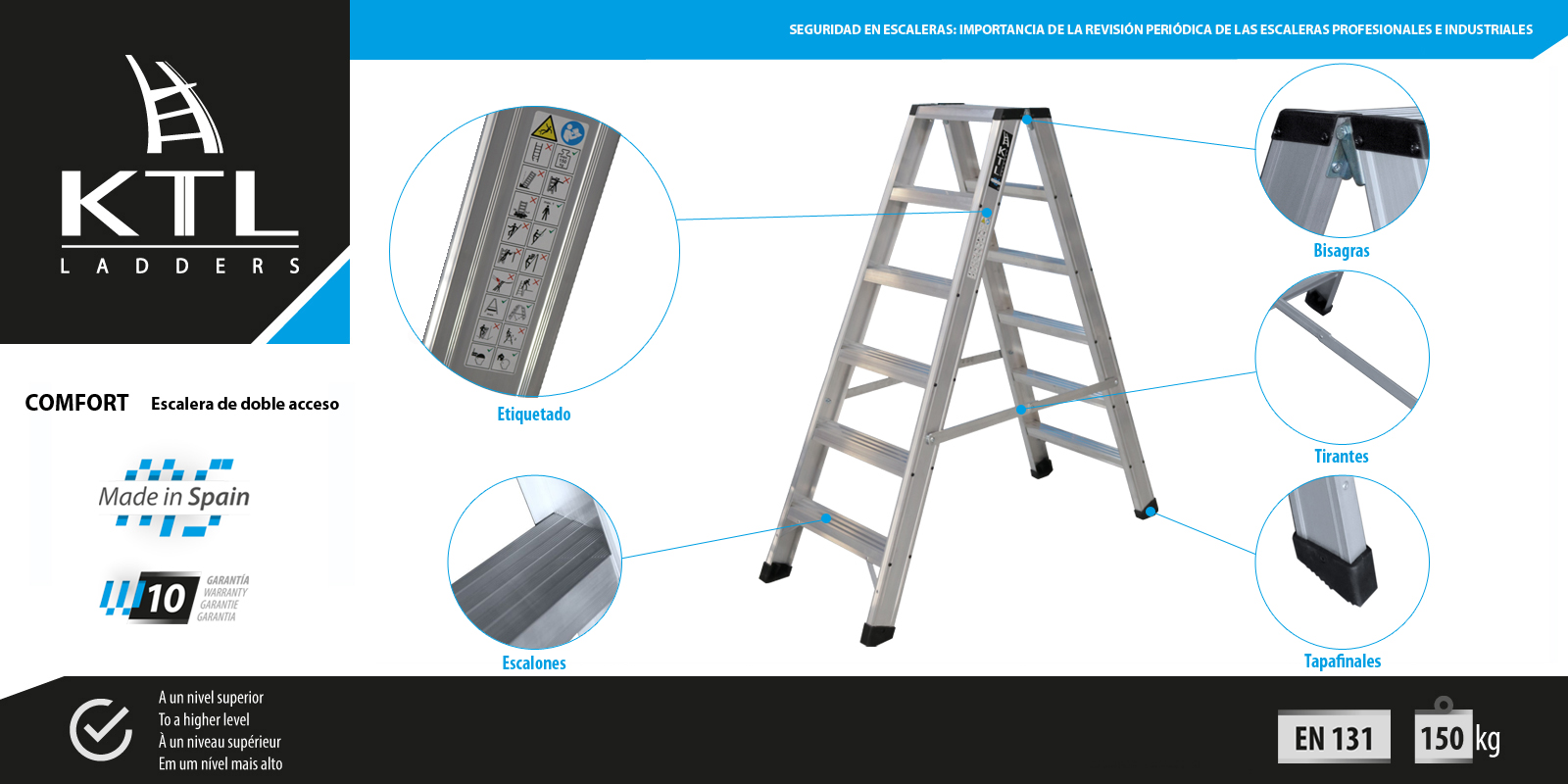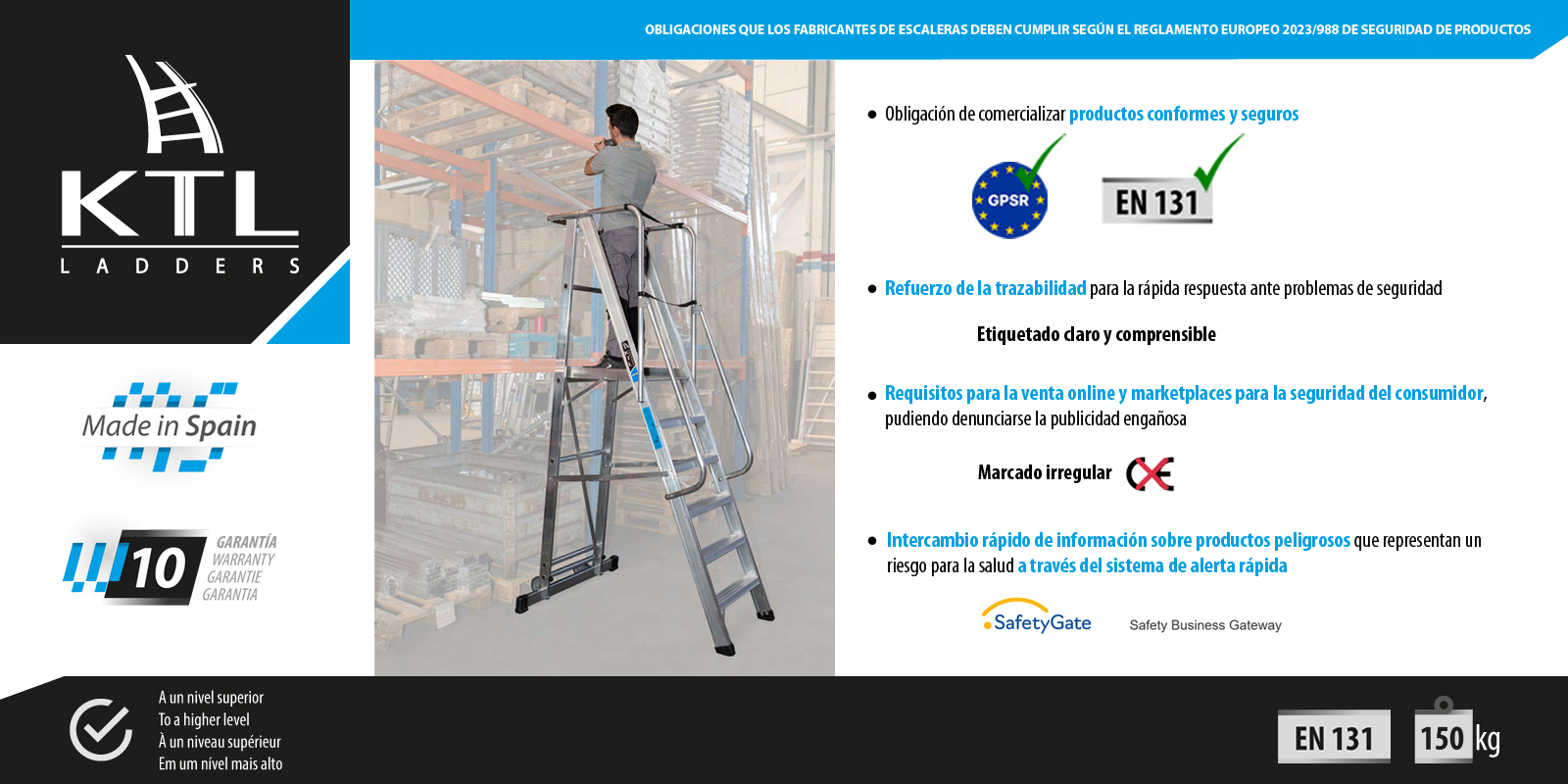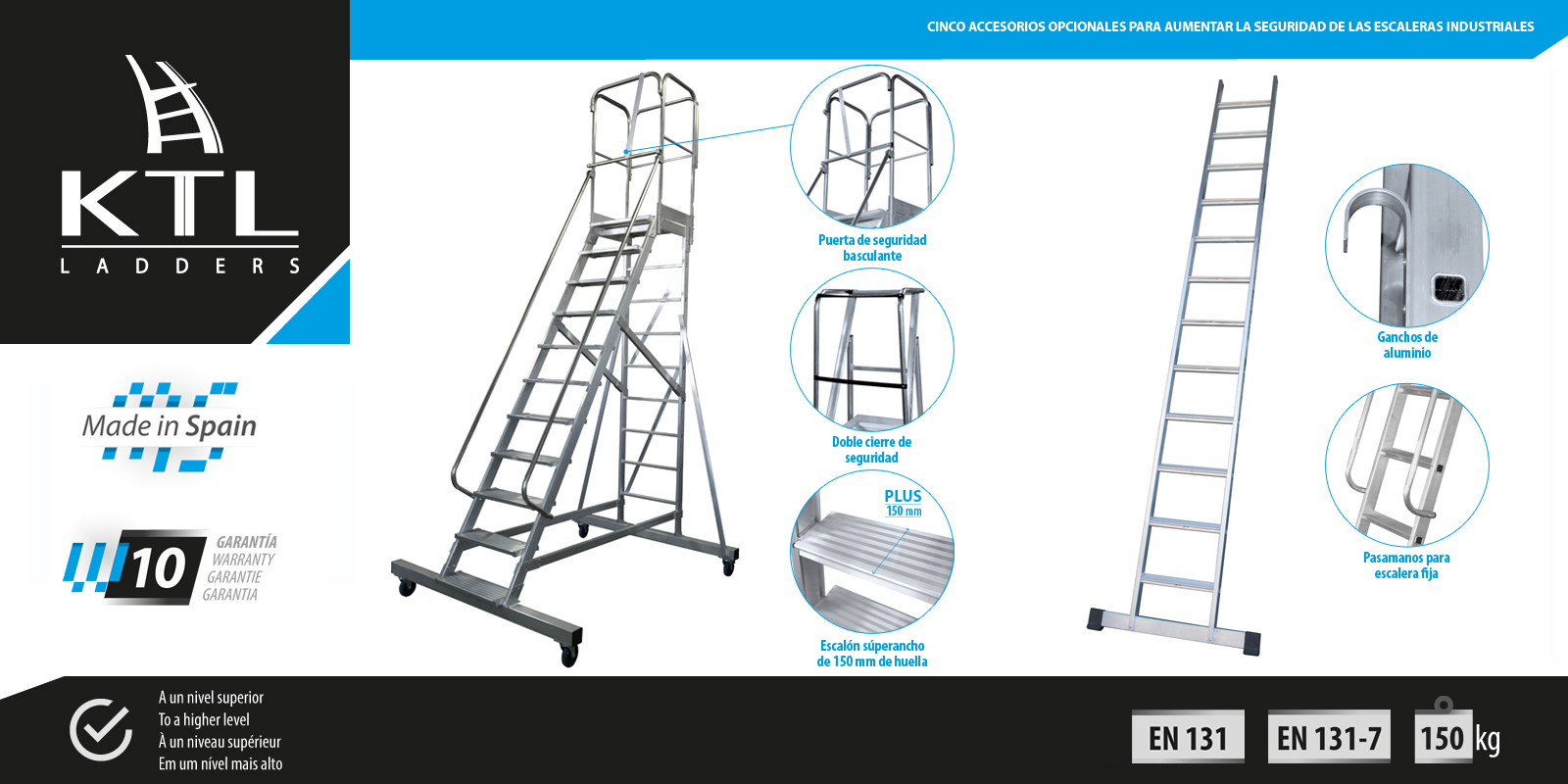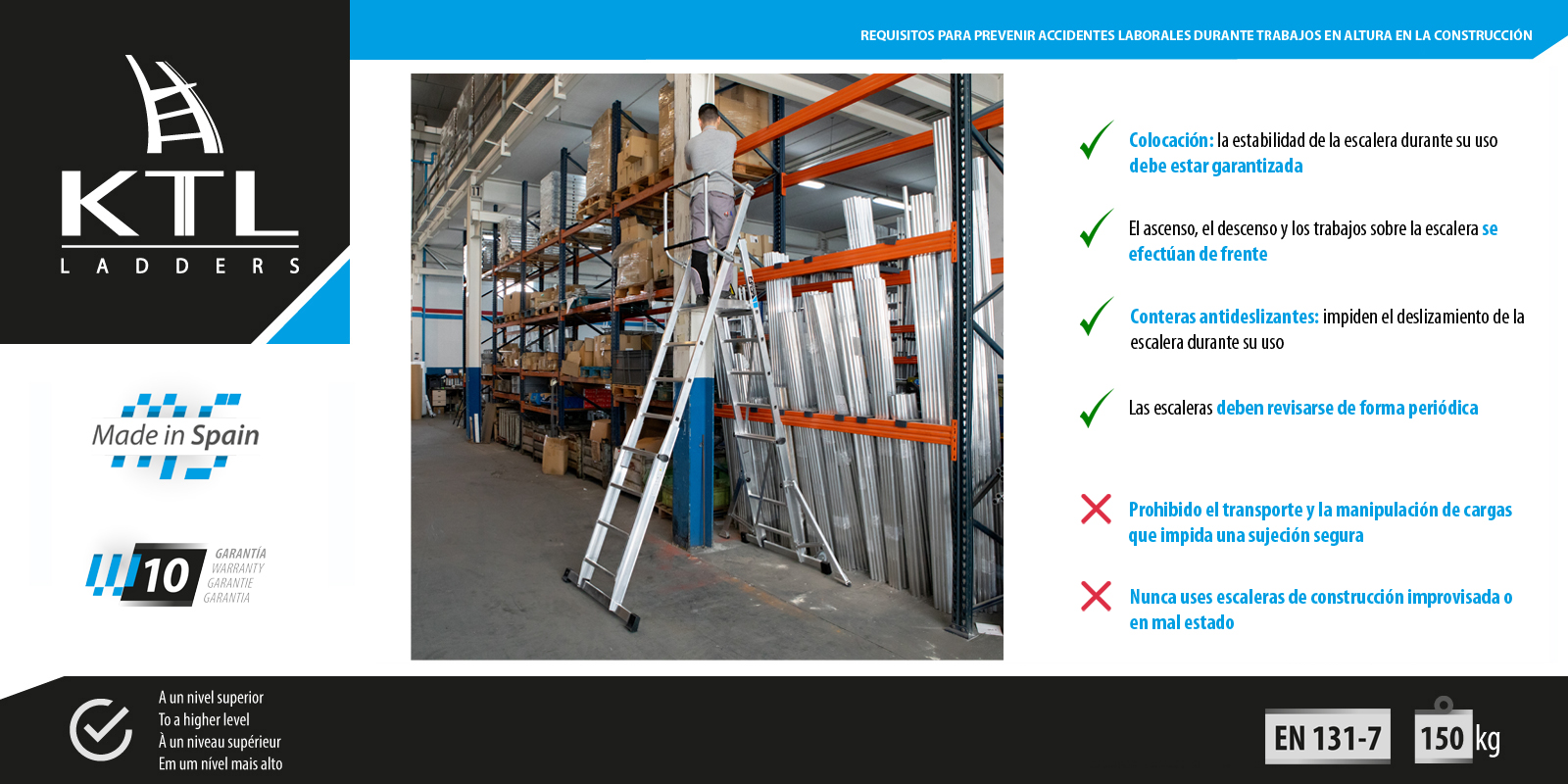Ladders are essential work tools for maintenance tasks, machinery repair, industrial work, and construction-related activities. For this reason, according to the National Institute for Occupational Safety and Health (NIOSH), “falls from height cause many fatal or severe workplace accidents” in these sectors. The use of professional and industrial ladders involves meeting a series of requirements to ensure the safety of workers, including periodic inspections of the ladders. Besides the personal commitment of professionals to use them correctly, workplace safety departments must provide training to their staff to know how to inspect them properly.
Falls from different height levels, entrapments, and the tipping or breaking of the ladder are some of the risks associated with their poor condition. To avoid these dangers, it is not enough for the ladder to comply with the European Standard EN 131; it is essential to perform thorough and periodic inspections to check the condition of professional and industrial ladders, regardless of whether they are aluminium, wood, or fibreglass ladders. If any damage or defect is detected that could cause the ladder to malfunction –no matter how minor– it must be taken out of service for repair or replacement.
How to inspect professional and industrial ladders?
At KTL-Ladders, we offer several recommendations to ensure that your ladder is in optimal condition to guarantee the safety of professionals while working at height.
Labelling of ladders
It is important that professional and industrial ladders always have their labelling and stickers provided by the manufacturer visible. Therefore, the ladder should be free of paint or any other element that might obscure a clear and quick reading of this information. These labels include data related to the product’s compliance with reference standards, total load, dimensions, maximum working height, safety standards, or manufacturer details, among other user information. At KTL-Ladders, we recommend that before starting your height work, you read and follow all the usage instructions on your ladder.
Checking the non-slip feet
These protective elements prevent the ladder from accidentally moving on the surface, ensuring the professional’s stability while using it. Despite being made from a flexible and durable material, continuous and intensive use of the ladder can wear out or damage the non-slip foot, risking the worker’s safety, who may suffer accidental falls due to insufficient grip.
When replacing them, it is important to go to official centres, since not all ladders have the same type or size of non-slip feet. At KTL-Ladders, we offer replacement foot kits for our customers and users, which can be easily replaced and fit the ladder structure, ensuring proper functionality.
Verification of ladder components –rungs, steps, or joints–
Before starting our height work, it is important to check that all parts of the ladder are working correctly and in good condition. If we detect that the ladder’s rungs, steps, rails, or joints are damaged, defective –broken, poorly assembled, or cracked– or dented, we must remove the ladder from service and not use it until it can be repaired, if possible. KTL-Ladders’ warehouse ladders feature non-slip and bolted steps that can be easily replaced if they show any deterioration, extending the ladder’s useful life.
Additionally, we should check that the ladder has no rust or corrosion, as these factors can directly affect its durability. Although KTL-Ladders’ professional and industrial ladders have non-slip surfaces for safer and more stable climbing, descending, and working, it is advisable to ensure that their elements are free from residues or liquids like grease, oil, or paint that could cause slips or accidental falls with serious consequences.
Furthermore, the ladder’s moving parts must operate smoothly and lightly, fixed joints must be tight to ensure maximum safety, and any accessories added to our professional and industrial ladders must be stable and free from damage or impacts. Sometimes, we can detect that the support and securing systems are in poor condition or that the pulleys and ropes, essential for extending certain types of ladders, are worn. Failure to meet any of these points will require the immediate removal of the ladder from use.
Checking safety devices
KTL-Ladders’ professional and industrial ladders feature straps, bands, and safety locking systems to ensure greater stability for professionals. Therefore, before performing height work, it is important to check that all these safety devices are functioning correctly and show no anomalies, as otherwise, our health could be seriously at risk.
The need to maximize time often leads to a significant mistake: not properly inspecting the ladder’s condition. For this reason, periodic inspections of professional and industrial ladders should be part of the workers’ daily routine to monitor and record their condition.
Using a damaged ladder is not safe in any work environment, so if any damage or defect is detected, it must be immediately removed from circulation for repair or replacement. If the damage can be repaired, the manufacturer or an authorized person must certify original replacements. This inspection, which can take just a few minutes each day, allows us to work comfortably, safely, and stably.




